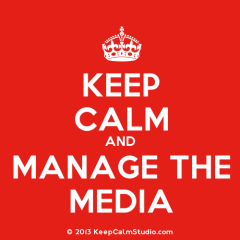By Gini Dietrich
I still look in the mirror and see my 27-year-old self. It certainly doesn’t feel like I’ve been practicing communications for more than 15 years. But when I think back to how things were done at the beginning of my career versus today, it’s easy to see how that many years have flown by.
We used to write news releases, advertorials, feature stories, and more, print them out, overnight them to the client, and wait for their feedback. A few days later, the feedback would come back, via an overnight package, and we’d make the changes, mark it final, and send for their signature.
Today that seems like an incredible waste of time (and trees). I can still picture the outbox where the envelopes were collected to be sent at the end of each day.
As well, media relations used to be about getting invited to editorial board meetings, hosting journalists at week-long events so they could learn more about your organization, and finding a reason to have lunch, coffee, or dinner with journalists to build your relationship with them.
Long after that became a no-no, there were still some journalists who would see you on the sly … and you knew who they were and how to approach them. In fact, there was one Chicago Sun-Times reporter who practiced that until he retired two years ago.
The Great Recession
While these things were beginning to change for ethics reasons, when the economy crashed in 2008, things really began to change.
Suddenly the journalists with whom you’d built relationships with during your career were taking mandatory furloughs or, worse, being laid off. Those who were left were suddenly covering three or four topics, when only one was their expertise.
The need for a PR professional became even more needed, but because journalists were so busy, they resented those who called or emailed simply for the sake of keeping the relationship alive.
Then, of course, social media entered the fray and journalists began to use that and their own content to find sources. The good old days of picking up the phone and chatting about the stories that were forthcoming to see if your organization was a fit are very slim and the web has changed the way we communicate.
It’s pretty easy to understand networking and building relationships with human beings. We all do and have our entire lives.
What’s more difficult to understand is how to do that using technology and without ever actually speaking to someone who can help you tell your story.
Manage Media Relations in the Digital Age
Following are some tips for you to consider using when you embark on a media relations program.
- Use the social networks. If you have targeted publications or journalists for your industry, find them on the social networks. More than likely, they are on Twitter and you can follow them there. Add them to a Twitter list so you see everything they tweet. Find a reason to connect with them there, even if it’s just to introduce yourself, and keep the conversation going on Twitter every day. Soon enough you’ll find something they are working on that is a fit for you.
- Read their articles. Unless they’re in TV, most journalists have something you can read and comment on. Many will read the comments on their articles to source new people to call. If you offer a differing opinion or provide more information on the topic, it’s highly likely they will contact you for future stories. For a step-by-step process on how to do this, check out Six Tips to Pitch Journalists On Your Own.
- Send a personalized email. The other day I received an email from a peer that said she loved reading Spin Sucks. She said she just wanted to introduce herself. She wrote a couple of sentences about how she thought the two of us could work in the future and she ended it there. I fully expect to receive a pitch from her soon, but she started out by engaging with me instead of asking something of me.
- Send something in the mail. When Marketing in the Round came out last year, I bought several copies to send to journalists when it was appropriate. But if you don’t have a book, a handwritten note works extremely well in today’s fast-paced, digital world.
- Personalize your pitches. It’s pretty easy to write a news release about your latest news, copy it into an email, add a bunch of email addresses, and hit send. But that never, ever works. You’ve spent all this time getting to know your industry journalists. Don’t insult them by sending something you sent to everyone on your list.
- Be available to talk about industry trends. There will be times you don’t have any news to share or the news you do have doesn’t fit anything your targeted journalists are writing. But they may ask you to comment on industry trends or industry news. While it may be just a quote in a bigger story, the strategy here is to be helpful as often as possible. That will lead to a bigger story centered around you.
If you do just one of these six things, and you are consistent and smart about it, you soon will have some media relations success.
A version of this first appeared in my weekly AllBusiness Experts column.
